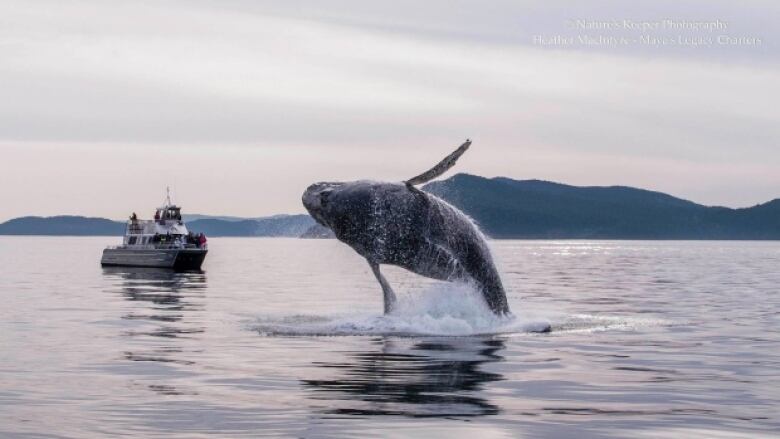Mixed prospects for world's whales, meeting told
'The news for small whales, small cetaceans is, in many cases, quite disastrous'

As concerns rise about the West Coast's southern resident orca population, an international meeting is offering a mix of optimism and lament for cetacean species around the world.
OrcaLab director Paul Spong returned this week from the International Whaling Commission's meeting in Slovenia.
Spong told On the Island host Gregor Craigiethe IWC meeting heard that populations of great whales, including North Pacific blue whales and humpbacks, are rebounding.
Meanwhile, he said"the news for small whales, small cetaceans is, in many cases, quite disastrous."
The mixed prognosiscomes on the heels of a setback for the local orca population, following the deathof a female orca named J28 after months of losing weight, and concerns for the survival of her latest offspring, J54.
- Mother of baby-boom orca dies after months of weight loss
- Two-thirds of wildlife will disappear by 2020, WWF says
- Orca research station sends text messages when killer whales nearby
Several species in danger
And it follows a grim report released by the World Wildlife Fund this week which warned two-thirds of the wildlife on Earth will disappear by 2020.
The scientific committee at the IWC meeting warnedseveral small cetacean speciesare in imminent danger of being wiped out, Spong said.
One is the vaquita, a tiny dolphin that inhabits the northern Gulf of Mexico and now numbers about 60 individuals,Spong said.
"And they're still being caught in gillnets in a fishery that's actually been banned by the Mexican government, but it's producing a product that's in high demand in China."
As well, he said, the Maui dolphin in New Zealand is reducedto just 53 individuals.

"Those two really interesting tiny species will probably be gone," Spong said. "As will be the Irawaddy dolphin, which is a little dolphin that inhabits a nexus of rivers in Indochina."
Spong said the Irawaddy dolphin has declined from six to three surviving individuals and is functionally extinct, meaning there are too few left to breed and give the population any chance of recovering.
Spong said reasons for declining cetacean populations include food supply andhuman activities such as oil exploration and seismic testing, but one of the biggest is entanglement in fishing lines and drifting nets.
"It's now recognized as being a really important problemand I think the numbersare astounding," Spong said."There's an estimate of 300,000 individual whales and dolphins that are killed annually as'bycatch'."













_(720p).jpg)


 OFFICIAL HD MUSIC VIDEO.jpg)
.jpg)



























































































